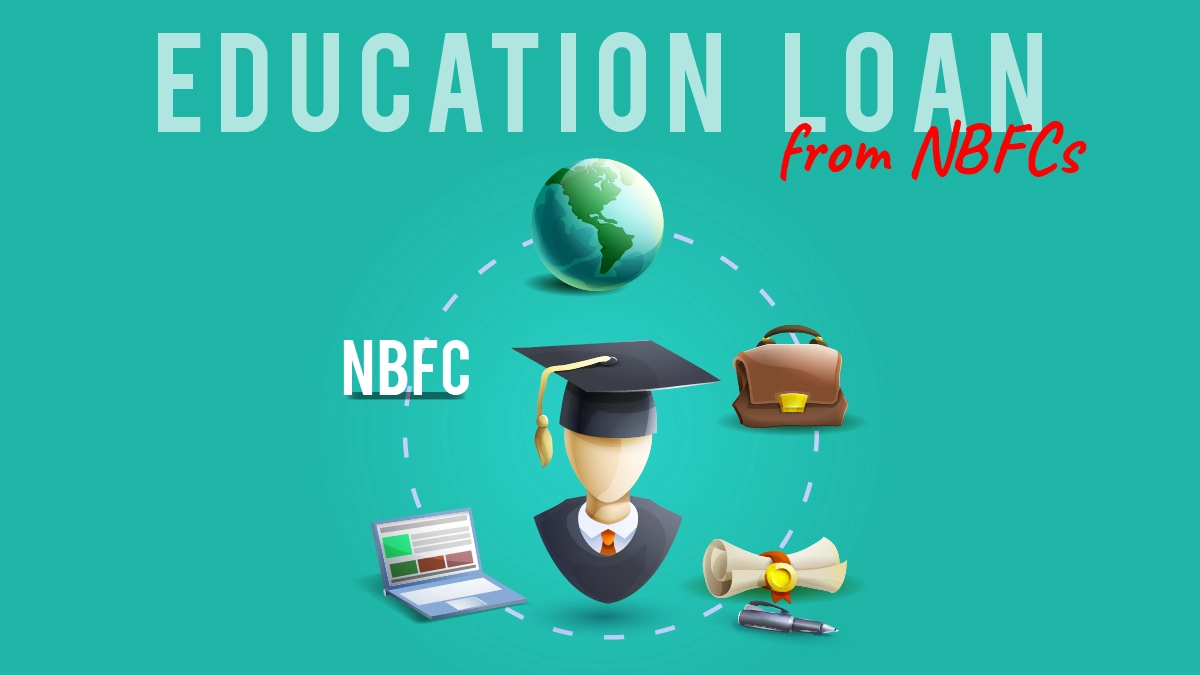https://www.wemakescholars.com/blog/education-loan-interest-subsidy-government-schemes-to-know
Abroad Education Loan | Updated

HEST 2025
India's Largest Higher
Education Scholarship Test
Total Scholarships up to 2 Cr
Know more and Apply
Registrations close in
For many students, funding is a major cause of worry when it comes to higher education. Education loan schemes offered by many nationalized banks have enabled extremely bright students to pursue their dreams of studying abroad. However, another stress factor for such students is their education loan repayment. It is to lighten this financial load that the Indian government has introduced a number of education loan interest subsidy schemes for the benefit of such students.
The below video, which is the 16th episode of Loanflix, titled, 'Education loan interest subsidy: Government schemes', will give you in-depth information on these schemes. Loanflix is a web series that focuses on clearing the fundamentals of education loans and more.
Which are the Types of Education Loan Interest Subsidy Schemes?
The following education loan interest subsidy schemes were introduced by the Govt. of India for students belonging to specific social groups. All the schemes majorly focus on students coming from economically backward sections.
- Central Sector Interest Subsidy Scheme (CSIS)
- Padho Pardesh Scheme.
- Dr. Ambedkar Central Sector Scheme
The Central Sector Interest Subsidy Scheme (CSIS subsidy scheme) is for students who wish to pursue their higher education in India only. Since the Padho Pardesh scheme and the Dr. Ambedkar Central Sector scheme are of more relevance to students who wish to pursue their higher studies abroad, these will be explained in detail in this article.
What is the Importance of Availing an Education Loan Interest Subsidy?
Under any central government education loan interest subsidy scheme, the interest for the entire moratorium period is paid off by the government. This moratorium period is the course duration, plus one year or six months after getting employed, whichever happens, earlier. Since these subsidy schemes are only applicable to candidates who are financially weak, being able to save on any education loan-related expenses can provide them with huge relief.
Read More on Margin Money: Loan Margin in Education loan
How can students benefit from these interest subsidy schemes?
The biggest highlight of these subsidy schemes is the education loan interest waiver. Another important provision is that meritorious students who come from limited economic backgrounds are given priority under these schemes. In any case, these interest subsidy schemes offer a subsidy on a loan amount of Rs.20 Lakhs only. This means that even if the loan amount is higher, the subsidy will be applicable on Rs.20 Lakhs only.
The subsidy schemes mentioned above can help eligible students save an amount of Rs.6 Lakhs from their entire repayable loan amount. Read on to know more!
Basic criteria to be eligible for any education loan interest subsidy scheme
To be eligible for an exemption on the interest payment under any subsidy scheme, students must meet the following criteria:
- Any particular education loan subsidy scheme is applicable on abroad education loans borrowed for Masters, M.Phil, and Ph.D. programs only with no limitations on the subject area.
- These subsidies are applicable to education loans borrowed from member banks of the Indian Banks Association. Hence, education loan applicants from NBFCs/foreign lenders are not eligible to avail subsidies under these schemes.
- In any case, only one member of a family can avail of this education loan subsidy at a time. Students are not eligible for these schemes if another member from the same family(Parents, siblings, spouses, etc.) has already availed a subsidy offering similar benefits.
These were general points to be kept in mind before applying for any education loan interest subsidy scheme in India. Now let’s take a closer look at the two major schemes that are beneficial to students who have taken abroad education loans.
The Padho Pardesh Scheme of Interest subsidy on education loans for overseas studies
Who is it for?
This scheme is only applicable to meritorious students belonging to some of the notable minority communities in India like Muslims, Christians, Sikhs, Buddhists, Jains, and Zoroastrians (Parsis). As mentioned in the previous paragraphs, the students eligible under this scheme are exempted from paying the interest levied on them during the moratorium period. After their moratorium period gets over, the remaining interest and the principal loan amount has to be paid by the candidate.
Eligibility Criteria:
- The student should have secured admission in the approved courses for Masters, Ph.D. and MPhil levels abroad.
- The student should have availed an abroad education loan from any bank that is a member of the Indian Banks Association. This includes all major public-sector banks and a few notable* private banks.
- Students must apply for this interest subsidy scheme within the first year of the course. No fresh applications will be accepted by the respective banks in the second year.
Income Cap & Required documents:
- The total income of the candidate from all sources, including family or otherwise, should not exceed Rs.6 Lakhs per annum.
- Students should provide relevant proof that they belong to a minority community.
- In addition to the education loan documents, candidates are required to submit an income certificate provided by a competent authority in the state/ UT, supporting the income shown by the candidate to the bank at the time of applying for the Padho Pardesh interest subsidy scheme. You may take a look at the list of the competent authority in various states who can issue the income certificate, here.
Yearly intake
Although it is open to meritorious students, getting an interest subsidy under the Padho Pardesh scheme is not easy because there is a state-wise and religion-wise quota fixed for students who can get this subsidy. Hence, this limits the number of students who can avail the benefits of this scheme.
Amongst the quota fixed by the government for eligible candidates, 35% of the seats are reserved for female candidates. In case of the non-availability of female candidates, these seats will be allotted to male candidates. The below document will give you a clear picture of the state-wise quota fixed for the Padho Pardesh scheme.

How much do you save with the help of an interest subsidy & Why?
As mentioned above, there is an explanation behind why only Rs.6 Lakhs are subsidized for eligible candidates and why they apply the subsidy on a loan of Rs.20 Lakhs only. The total approved budget for the Padho Pardesh scheme was Rs.24 Cr for a yearly intake of 400 students only.
When you do the math, you will find that this provision can only provide a subsidy of Rs.6 Lakhs to each of the 400 eligible students under any subsidy scheme. Let’s see how they came down to this figure.
If you may have observed, the average interest rate fixed by most banks for education loans is 10%. Applying a 10% interest rate on Rs.20 Lakhs and considering the average moratorium period to be 3 years, the accumulated interest comes to Rs.6 Lakhs. This is the total subsidy given to an eligible candidate under any government education loan interest subsidy scheme. The next subsidy scheme benefits two different groups of candidates.
Dr Ambedkar Central Scheme of Interest subsidy on education loans for Other Backward Classes and Economically Backward classes
Who is it for?
Under this scheme, the entire interest payable during the moratorium period will be waived off for meritorious students belonging to the economically backward classes (EBC) and other backward classes (OBC) categories. After the moratorium period ends, the candidates have to undertake their education loan expenses on their own.
Eligibility Criteria:
- Similar to the Padho Pardesh scheme, this scheme is applicable to abroad education loans availed from member banks of the Indian Banks Association only. Students should have secured admissions to any Masters, PhD, M.Phil courses abroad.
- No two members of the same family (Parents, siblings, spouses) can avail of an interest subsidy under the same scheme.
- Students applying under the OBC (Other Backward Classes) category must submit an OBC certificate issued by the competent authority in addition to the income certificate, to the lending bank at the time of applying for this scheme. This is what the OBC certificate looks like.

Income Ceiling:
- For OBC candidates, the annual income from all sources(parents, siblings, spouses, guardians, self) should not exceed Rs.3 Lakhs.
- For candidates belonging to economically backward classes(EBC), the annual income from all sources (same as above) should not exceed Rs.1 Lakh.
- While applying for this scheme, an income certificate ( ITR, Form 16, income certificate) issued by the competent authority must be submitted by candidates belonging to both categories.
Yearly intake quota:
There is no fixed religion-wise quota for this interest subsidy scheme. However, the following exceptions are made by the central government.
- 50% of the total allocation is reserved for female candidates.
- 10% of the total allocation is reserved for students coming from the North-Eastern states. This is a mandatory provision and it has been made keeping in mind the total population of the NE states.
Application Process for both schemes
There are no specific steps involved in the application procedure for both the education loan interest subsidy scheme. After availing an education loan, eligible students need to take the following actions:
- After having availed an education loan from the bank, students need to inform their lending banks about this interest subsidy scheme and that they are eligible for this scheme.
- Most banks would recommend you to apply for an education loan through the Vidyalakshmi portal. However, many students have faced a lot of problems with this portal due to its lengthy applications and delay in service. This is the reason why the financial team at WeMakeScholars never advises its students to do the same.
- Once they are informed, the lending banks will feed the eligible student’s information to the subsidy scheme’s portal. The eligible students are selected according to certain criteria.
- Another alternative to applying to the interest subsidy schemes is to fill your education loan application through the Vidya Lakshmi portal for education loans.
- Most public-sector banks would ask applicants to do the same. However, it is advised that you go for the first approach as many students have found it difficult to obtain their education loans through this portal due to their extremely lengthy application forms and also because most banks take longer than usual to respond to applicants' queries on this portal.
Read More on Education loan income tax exemption: Section 80 E (A complete guide)
Selection procedure for both the education loan interest subsidy schemes
- Post the loan sanction, the lending banks upload the candidates’ details into the nodal banks’ software on a quarterly basis.
- This list goes to the selection committee.
- The selection committee considers the following factors:
- The merit of the candidate.
- Annual income from all the sources ( Siblings, spouses, parents, guardians).
- Under the Dr. Ambedkar education loan interest subsidy scheme, priority will be given to students who have finished their qualifying education from government universities/institution prior to being enrolled in an abroad education program.
On the directions of the governing body, all the member banks will open the subsidy portal. The application portal for these schemes will be opened only once in a financial year by nodal banks. They may reopen it again if they do not receive a sufficient number of applications that satisfy the yearly quota.
The central government can stop the education loan interest subsidy for the following students
- If the student gives up their Indian citizenship in the course duration or moratorium period.
- Students who discontinue their courses mid-stream.
- Students who produce false claims in order to be eligible for the subsidy schemes.
Subsidy schemes have been introduced for your benefit, and as someone who wishes to avail of their benefits, it is essential that you should be informed about them. A decision taken on the basis of incomplete information can prove to be bad for you in the future. We hope this article has answered most of your queries regarding interest subsidies. We are planning to come up with a series of articles that will focus on the education loan procedure requirements for different countries. So keep a lookout for this section on the website.
Note: WeMakeScholars is an organization funded and supported by the Government of India that focuses on International Education finance. We are associated with 10+ public/Pvt banks/ NBFCs in India and help you get the best abroad education loan matching your profile. As this initiative is under the Digital India campaign, it’s free of cost. The organization has vast experience dealing with students going to various abroad education destinations like the US, Canada, UK, Australia, Germany, Sweden, Italy, China, France among others



![Education Loan for Working Professionals [Executive MBA] Education Loan for Working Professionals [Executive MBA]](https://www.wemakescholars.com/uploads/blog/Education-Loan-for-working-professionals.webp)
Kindly login to comment and ask your questions about Scholarships & Education Loans